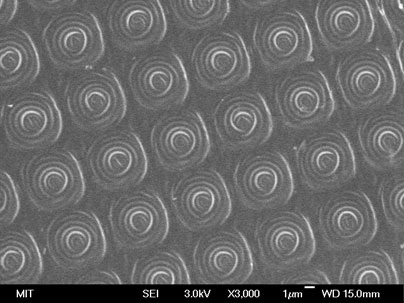 MIT reports today on the work of professors Yet-Ming Chiang, Angela Belcher and Paula Hammond, who’ve developed a way to build tiny batteries about half the size of a human cell to power tomorrow’s equally tiny devices. The electrolyte of the battery is made of polymers stamped onto a rubbery film. On top of this, a genetically altered virus goes to work, self-assembling to form wires that act as the battery’s anode.
MIT reports today on the work of professors Yet-Ming Chiang, Angela Belcher and Paula Hammond, who’ve developed a way to build tiny batteries about half the size of a human cell to power tomorrow’s equally tiny devices. The electrolyte of the battery is made of polymers stamped onto a rubbery film. On top of this, a genetically altered virus goes to work, self-assembling to form wires that act as the battery’s anode.
Several TEDTalks delve into the wonders of self-assembly at the microscopic scale. The first half of Neil Gershenfeld’s talk is a quick primer on self-assembly, and its uses in what he sees as the coming world of ubiquitous computing — tiny processors in doorknobs and lightbulbs, doing useful things and talking to one another. (Look for the little blocks that move on their own to spell out “M I T.”) Saul Griffith talks about the elegance of self-assembly — taking advantage of the form that natural materials want to take. Then watch Paul Rothemund twist and fold DNA into triangles, stars, and smiley faces.
Image: An array of microbattery electrodes, each only about four micrometers, or millionths of a meter, in diameter. Image courtesy / Belcher Laboratory, MIT